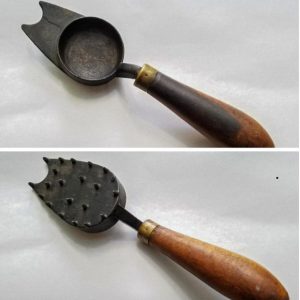The communal hand-washing fountain, a familiar sight in mid-20th century public spaces like schools and factories, represents a unique convergence of hygiene and practical design. This vintage installation, while seemingly antiquated, played a crucial role in fostering clean habits and community interactions. Dive into the fascinating history of these fountains, exploring why they were once essential and how they’ve gradually faded from public use.

The Birth of the Hand-Washing Fountain
In the early to mid-20th century, as public health awareness grew, so did the need for efficient hygiene solutions in large communal spaces. The communal hand-washing fountain emerged as a brilliant answer to this necessity. Its design—a central column from which water cascaded allowing multiple users simultaneous access—was not only innovative but also fostered quick and efficient hand washing.

Design and Functionality: Maximizing Efficiency
The core appeal of the communal hand-washing fountain lay in its efficiency. Facilities such as schools and factories benefited immensely as they could accommodate the hygiene needs of large groups simultaneously without the space and resource consumption typical of individual sinks. The fountains featured a simple, effective mechanism, usually operated by a foot lever or a central knob to control water flow, which minimized waste and facilitated ease of use.
Rise and Popularity in Public Spaces
During the 1940s through the 1970s, these fountains became a staple in various institutions, celebrated for their ability to save water and reduce the time spent in washrooms. Positioned strategically near cafeterias or gym areas, they allowed large numbers of people to uphold cleanliness, which was particularly important in settings where quick transitions between activities were common.

Nostalgic Reflections: More Than Just a Utility
For many who grew up during these decades, communal hand-washing fountains evoke a sense of nostalgia. They were not only about hygiene but also served as social gathering spots where students and workers shared moments. This social aspect turned a simple act of washing hands into a communal experience, strengthening bonds among peers.

Decline and Replacement: Shifting Hygiene Standards
By the late 20th century, perceptions and standards of public health had evolved. The same communal features that made these fountains popular began to pose hygiene concerns. The shift towards individual washing stations reflected growing priorities over personal space and hygiene, spurred by increased health awareness and the introduction of new technology like automatic faucets and motion-sensor soap dispensers.

The Legacy of Communal Hand-Washing Fountains
Though largely replaced in modern design, the communal hand-washing fountain remains a symbol of a bygone era of public design thinking focused on community and efficiency. Today, they are remembered not only for their practicality but also for their role in fostering a shared community experience in everyday routines.

Communal hand-washing fountains, with their rich history and impact, remind us of how design can influence public habits and community interactions. While they may no longer be appropriate for today’s hygiene standards, their legacy continues to offer valuable insights into the evolution of public health and communal space design.


